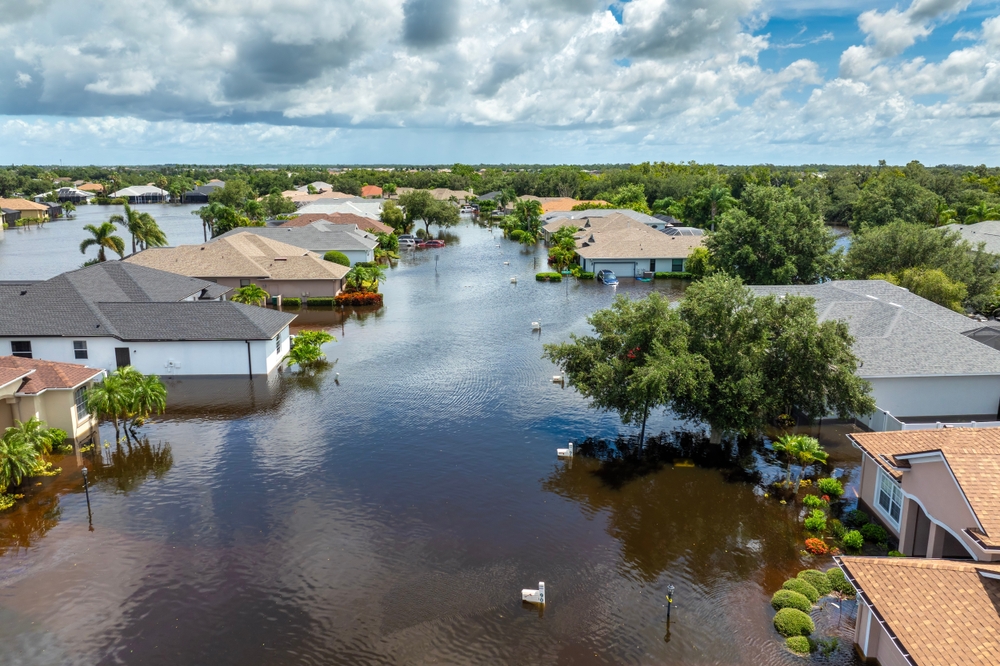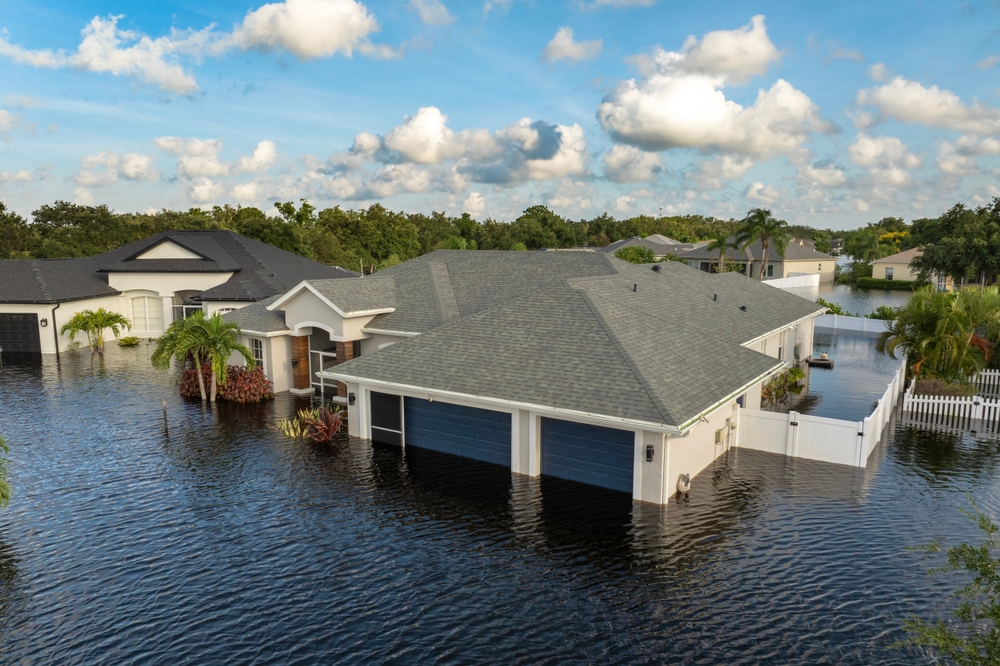Hurricane-fed storm surge, slow-moving tropical rain bands, and even everyday Gulf thunderstorms can dump more water than Louisiana and Mississippi soil can absorb. Just one inch of floodwater in a home can cause about $25,000 in damage.
Accessible Insurance believes that peace of mind should be both affordable and understandable. This guide answers important questions about flood insurance for homeowners. This way, you can make a smart choice before the next heavy rain.
Why Flood Insurance Matters
StanLiving near the Gulf means beautiful wetlands and vibrant ports—but also a disproportionate share of federal flood declarations. In the last ten years, FEMA declared over 40 disasters in Louisiana. Most of these, about 90%, were due to flooding.
Whether you own a raised cottage in New Orleans, a slab-on-grade home in Baton Rouge, or a condo on the Mississippi coast, a standard homeowners policy excludes flood damage. Only a dedicated flood policy fills that gap. .
Understanding FEMA Flood Zones
Every address falls into a flood zone rating—X, shaded X, AE, VE, and so on—based on historical data and elevation. Zone AE denotes a 1% annual-chance flood (often called the “100-year floodplain”). Zone VE designates coastal high-hazard areas subject to wave action. Knowing your zone guides coverage limits and sometimes determines whether your mortgage lender requires a policy.
High-Risk Parishes and Counties
- Louisiana: Jefferson, Orleans, Terrebonne, and Lafourche parishes sit at or below sea level and lead the state in NFIP claims.
- Mississippi: Harrison and Jackson counties face both riverine and coastal surge threats.
Even inland areas such as Ascension Parish see “rain-on-snow”-style flash floods when stalled thunderstorms dump 10+ inches overnight.
What Does Flood Insurance Cover?
A flood policy splits protection into two parts: structure and personal property. This way, you only pay for what you really need.
Building (Structure) Coverage
This pays to repair your foundation, walls, HVAC, electrical, and built-in appliances after floodwater enters from the ground up. The National Flood Insurance Program (NFIP) caps structure coverage at $250,000 for residential and $500,000 for commercial properties.
Contents Coverage
Furniture, electronics, clothing, and area rugs fall under contents. NFIP limits max out at $100,000, but private insurers often extend to $500,000 or more—handy for high-end audio gear or custom cabinetry.
Key Exclusions
- Landscaping, fences, and decks remain uncovered.
- Vehicles require a comprehensive auto policy claim.
- Basement improvements (flooring, drywall) receive limited reimbursement under NFIP.
Knowing these gaps lets you budget for private coverage upgrades.

NFIP vs. Private Flood Insurance
Choosing between a government-backed policy and a private-market alternative boils down to coverage limits, speed, and flexibility.
National Flood Insurance Program (NFIP)
Pros: Guaranteed acceptance in participating communities; federally backed claims funds; transferable to buyers.
Cons: Coverage limits may be too low for high-value homes; 30-day waiting period unless tied to a loan closing.
Private Flood Insurance
Pros: Higher limits (up to $2 million+), replacement-cost settlement on contents, and sometimes no waiting period.
Cons: Underwriting can be stricter; rates may fluctuate annually based on reinsurer appetite
When to Choose Which
If your mortgage lender simply wants compliance, NFIP works. If your rebuild value exceeds $250,000—or you need business-interruption coverage—private flood insurance fills the gap.
Tips to Lower Your Flood Insurance Premium
Even in high-risk parishes, premiums aren’t set in stone. The NFIP’s new Risk Rating 2.0 system and private-market tools both reward proactive steps. They value accurate elevation data and community resilience. Use the strategies below to chip away at costs without sacrificing coverage.
Secure (or Update) an Elevation Certificate First
Many South Louisiana homes still rely on pre-2000 elevation certificates that under-report the actual first-floor height or omit new mitigation features.
Install Foundation Vents & Raise Utilities
FEMA-approved flood vents equalize water pressure on crawl-space walls, reducing structural risk. Pair them with elevating HVAC equipment and electrical panels above the BFE to earn NFIP and private-carrier mitigation credits annually.
Participate in the Community Rating System (CRS)
When municipalities adopt higher zoning standards, improve drainage, and run flood-risk outreach, FEMA grants a CRS discount to every NFIP policyholder in that community. If your parish is hovering one or two points below the next CRS tier, a single drainage ordinance or levee improvement could shave hundreds off your premium.
Opt for a Higher Deductible—But Know the Trade-Off
Raising the deductible from $1,000 to $5,000 typically trims 10%–15% off the premium, yet it also means writing a bigger check after a claim. Accessible Insurance advisers run side-by-side illustrations so you can decide whether the annual savings outweigh the larger out-of-pocket risk.
Filing a Flood Insurance Claim: What to Expect
Buying flood insurance is step one; knowing how to use it under pressure is step two. A well-documented claim speeds payment, minimizes disputes, and lets repairs begin sooner—crucial in Louisiana’s humid climate where untreated sheetrock can sprout mold in days.
Step-by-Step Timeline
- Document the damage within 24 hours. Shoot smartphone videos, wide-angle stills, and close-ups of water lines on walls and furniture.
- Notify your agent—don’t wait for power to return. Claims can be opened by voice mail or email even if offices are closed.
- Meet the adjuster. NFIP and most private carriers send adjusters within 3-5 business days in catastrophe scenarios; expedited teams arrive sooner for Tier-1 parishes under hurricane declarations.
- File the Proof of Loss form. NFIP requires this sworn statement within 60 days of the flood date; private policies vary (often 30 days).
- Receive payment. Advances for emergency repairs hit your bank in as little as 48 hours; final settlement follows once rebuild estimates are approved.
Typical Documentation Needed
Underwriters look for pre-flood photos, receipts for major appliances, elevation certificates, and any invoices for prior mitigation work (vents, pilings). Accessible Insurance’s digital client portal stores these files off-site, so they survive even if your laptop doesn’t.
Common Claim Pitfalls to Avoid
- Throwing away damaged items too soon. Keep big-ticket debris until the adjuster sees it or photograph from multiple angles.
- Waiting on FEMA inspectors before beginning dry-out. Carrier policies mandate “reasonable steps” to prevent further damage—running dehumidifiers and removing wet carpet never counts against your payout.
- Accepting a lowball contractor bid. Submit at least two licensed-contractor estimates to support replacement-cost valuations.

Common Myths About Flood Insurance
Misinformation keeps far too many Gulf-Coast homeowners uninsured. Let’s debunk the big three.
“Homeowners Insurance Covers Flooding.”
Reality: Standard homeowners policies exclude water that touches the ground before entering your home.
“Only Coastal Homes Need It.”
Inland river overflow and inadequate drainage cause more than one-third of flood claims each year.
“It’s Too Expensive.”
The average premium equals the cost of replacing two major appliances—far less than gutting drywall and replacing flooring out-of-pocket.
How to Buy Flood Insurance
Getting covered is easier than most people think—just follow these steps.
1. Confirm Your Risk
Use FloodSmart.gov to view elevation, flood-zone shifts, and historical claims density.
2. Decide on Coverage Limits
Match structure limits to estimated rebuild cost rather than market value. Inventory household contents with photos to set an accurate personal-property limit.
3. Compare NFIP and Private Quotes
Accessible Insurance is an independent agency, so we pull both options side-by-side. Expect a 24-hour turnaround for most quotes.
4. Mind the Waiting Period
NFIP requires 30 days before coverage starts; private carriers may reduce this to 10 days or even immediate if tied to a mortgage.
5. Review and Bind
Sign electronically, schedule payment, and download proof for your mortgage servicer.
Frequently Asked Questions
Is flood insurance required?
Lenders must require it for properties in Zones AE or VE with federally backed mortgages. Even when optional, they may recommend coverage based on updated flood-risk maps.
Can renters buy flood insurance?
Yes. NFIP offers up to $100,000 contents-only policies with premiums as low as $120 per year in low-risk zones.
What happens if my area is recently rezoned?
FEMA allows a Preferred Risk Policy to convert to standard rating over two years, softening premium spikes. Reach out to Accessible Insurance to lock in transition discounts.
Next Steps: Secure Your Coverage Before the Next Storm Hits
Gulf weather moves fast—binding a policy after a storm appears in the Gulf won’t work. Let Accessible Insurance tailor a flood plan that fits your budget, meets lender requirements, and closes coverage gaps your homeowner’s policy leaves behind. Our licensed advisors serve all of Louisiana and coastal Mississippi, combining NFIP expertise with a private-market toolkit that many “big-box” agencies overlook.
